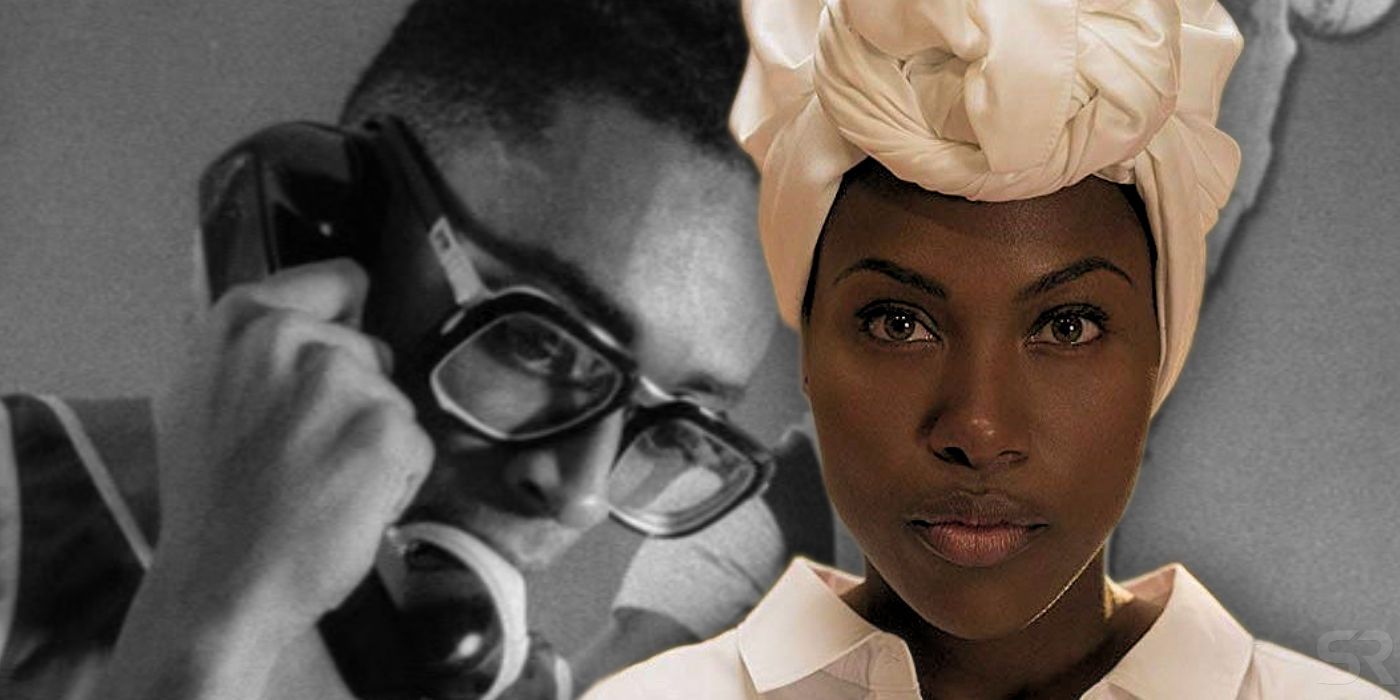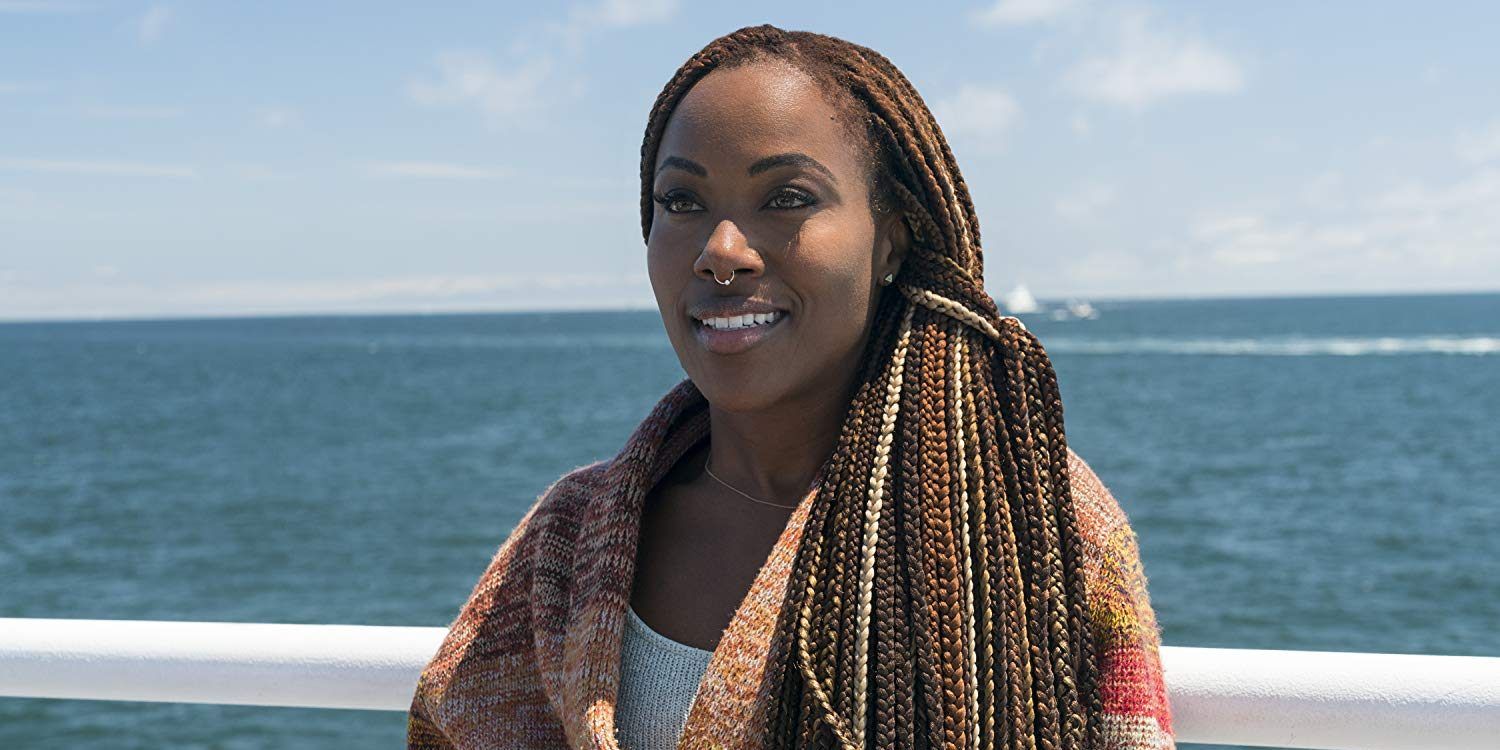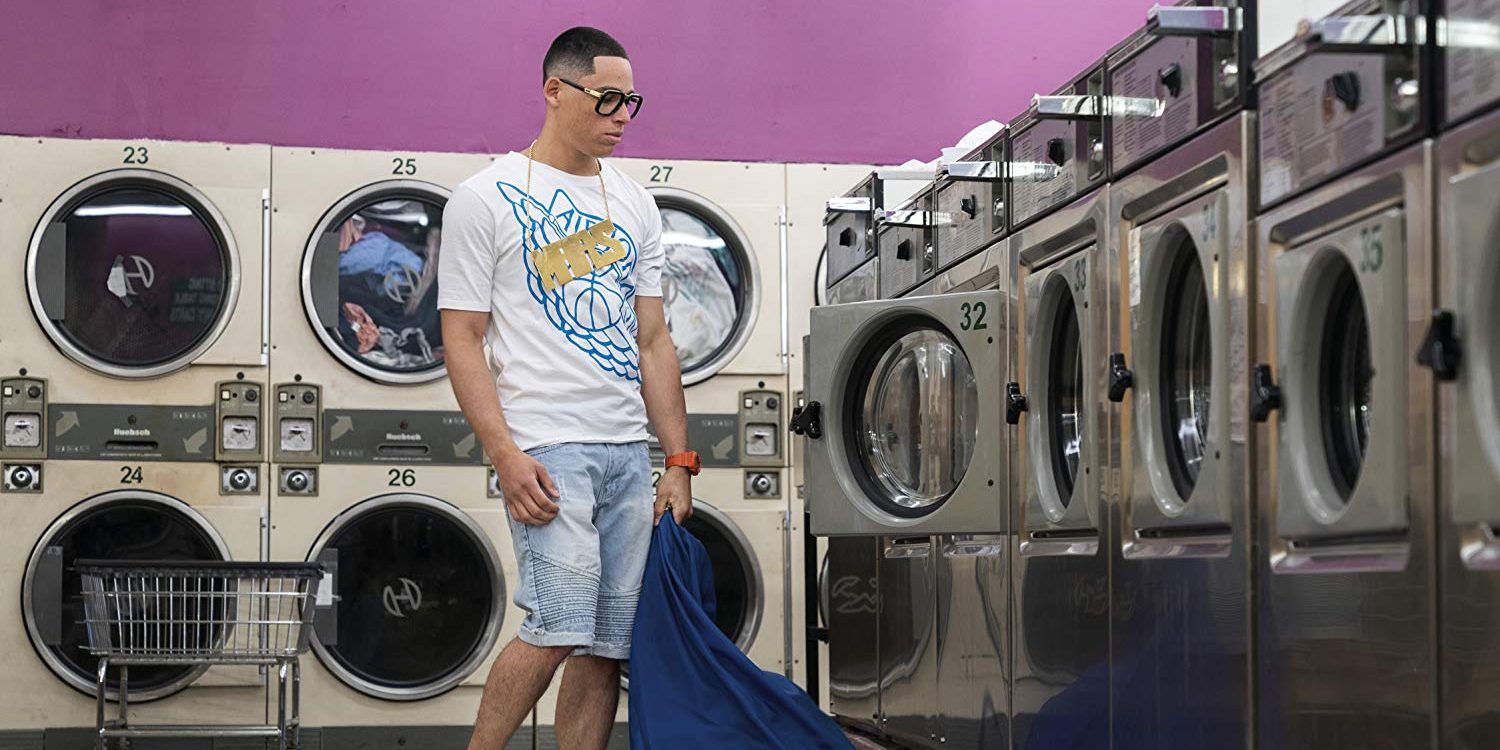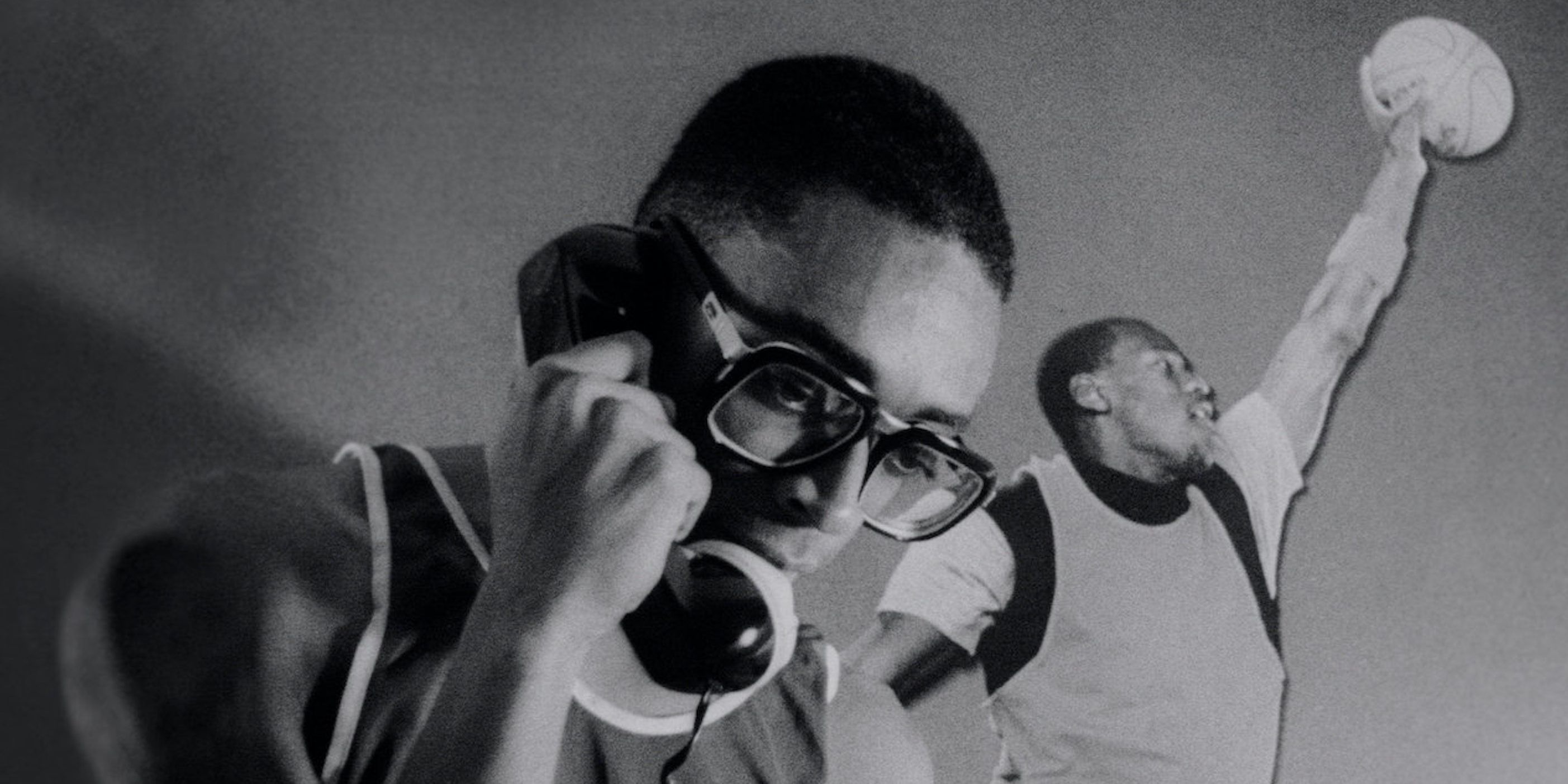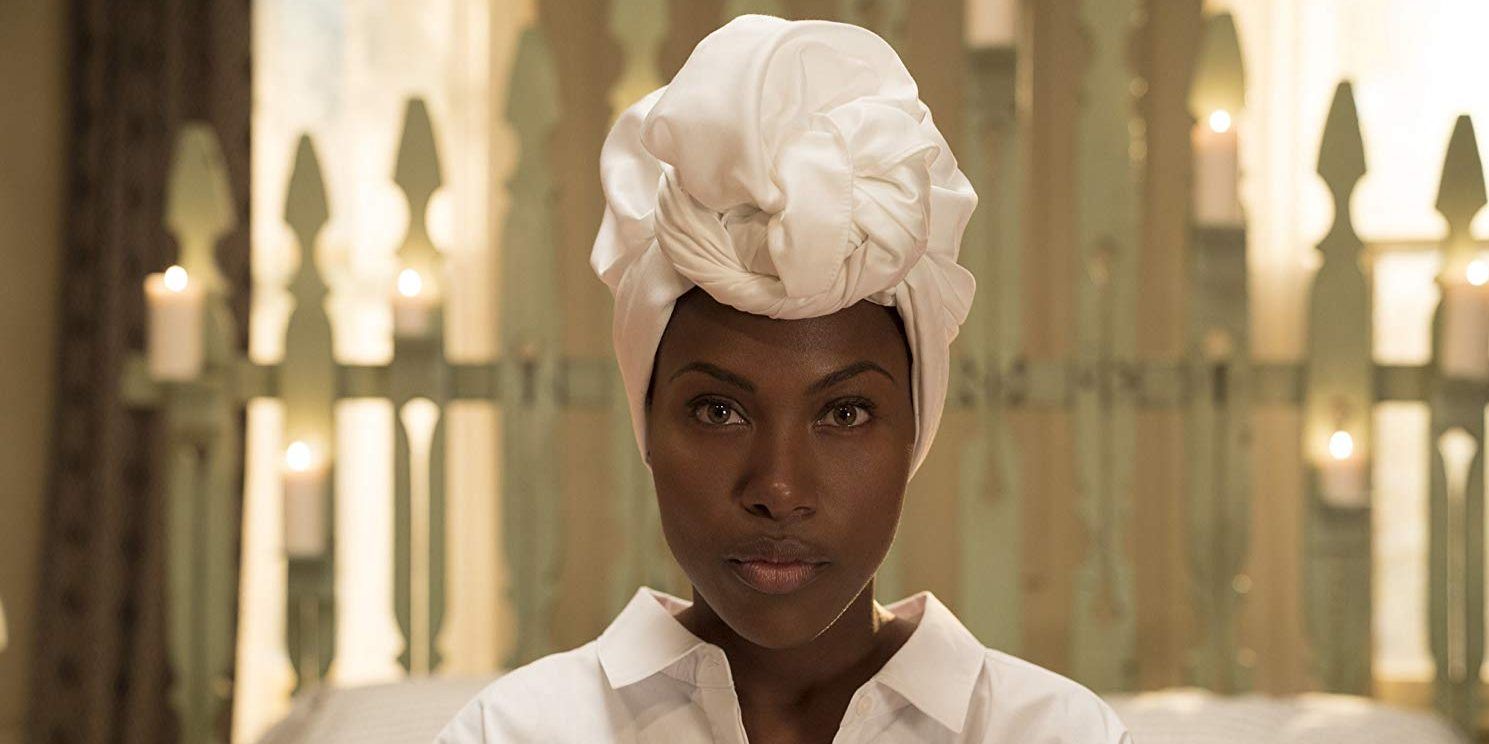How does Netflix’s She’s Gotta Have It series compare to Spike Lee's original film? Directed by Lee, both productions follow the trials and tribulations of a New York City artist named Nola Darling. But whereas the original 1986 film is mostly contained to its Brooklyn setting, the Netflix series takes a more expansive approach for a commentary about not only the black experience in America but also how people are connected through art.
Produced for $175,000, Lee’s 1986 feature debut earned over $7 million at the box office, thus creating more opportunities for the now-iconic director. In the original She’s Gotta Have It, American actress Tracy Camilla Johns stars as Nola Darling, a woman who maintains sexual relationships with three men: Jamie Overstreet (Tommy Redmond Hicks), Greer Childs (John Canada Terrell), and Mars Blackmon (Lee). In the Netflix series, the premise remains the same, along with the four main characters: DeWanda Wise as Nola Darling, Lyriq Bent as Jamie Overstreet, Cleo Anthony as Greer Childs, and Anthony Ramos as Mars Blackmon. In addition, Nola’s friend Clorinda "Clo" Bradford is a character in the movie and television series, portrayed by Joie Lee (Spike's sister) and Margot Bingham, respectively.
The original She’s Gotta Have It remains a highly-influential independent film, but Lee’s Netflix series allows him to explore even more themes than he did in the mid-'80s, along with pop culture trends and timely sociopolitical issues related to modern audiences.
Netflix’s Nola Darling Is More Vulnerable
In Lee’s original film, Nola is presented as an intelligent and engaging woman, one who enjoys her sexual freedom and independence. Given the 84-minute duration, though, there’s simply not enough time to show the complexities of Nola’s personality and background. So, Lee keeps it simple: three men pursue Nola, and she views them as a “collective.” The 1986 version of She’s Gotta Have It underlines Nola’s sexuality and adventurous personality. Greer suggests that Nola is a "sex addict," but fails to see the larger picture, or so it seems. On a deeper level, the film’s themes connect to slavery; a dark time in American history.
For Lee’s Netflix series, he similarly presents Nola as a so-called “free spirit”; a woman who’s honest with herself and romantic partners. She’s primarily interested in her evolution as a woman and artist, and she realizes that she must play the game in order to stay ahead. This version of Nola doesn’t need to make a point with her sexual freedom; her various relationships have more time to breathe because of the series format. So, Wise’s Nola is much more vulnerable than the original character. She cries when feeling personally or professionally trapped; she approaches life with exuberant joy, all the while remaining guarded as a black female artist trying to be completely free and honest with her work. The original Nola is slightly more distant and guarded.
She’s Gotta Have It season 1 ends with a lively dinner sequence featuring Nola and her three main men - a scene that’s part of the original movie. This time around, however, the dinner is brighter, both literally and figuratively. (The original film was shot in back and white.) Nola explains the “Roshomon Effect” - a theme that inspired Lee’s 1986 film: people can all see the same thing but have wildly different interpretations, as depicted in Akira Kurosawa's 1950 classic Roshomon.
By the end of She’s Gotta Have It season 2, Nola accepts that she’s doesn’t have to worry about pleasing white people or black people, evidenced by her art show in which she’s criticized for painting herself in the nude as a lynched woman. For Nola, the art’s connected to lessons learned during a Puerto Rico visit shortly before. She looks to the past for inspiration, and to inform people about her identity as a woman. Rather than heavily focusing on Nola’s sexual liberation, Netflix’s She’s Gotta Have It underlines Nola’s personal liberation as a woman, which in turn allows her to be completely free as an artist.
Netflix Fully Explores The Mars Blackmon Character
As the original Mars Blackmon, Lee infuses the character with personality and flair. Mars proudly wears a chain bearing his own name, and proudly sports Nike Air Jordans. At the time of the film’s release, Michael Jordan had only been in the NBA for a couple years, and Lee capitalized on the buzz surrounding the pro athlete. And given that Lee subsequently became well-known for his ardent support of the New York Knicks, Mars Blackmon’s love for basketball feels purely authentic. But in Lee’s 1986 film, the character exists to counteract the self-involved Greer and the pretentious Jamie. Mars has a big personality and makes Nola laugh. Still, he essentially lives in the "Friend Zone".
In Netflix’s She’s Gotta Have It, Mars has the same personality and vibe, but he’s portrayed by the aforementioned Ramos, an American actor of Puerto Rican descent. Crucially, Ramos is indeed from Brooklyn, and also starred in the hit Broadway musical "Hamilton." As Mars, he embodies all that fresh-to-death NYC energy that Lee exudes in the original film. But Netflix doesn’t make Mars a one-note character; he’s doesn't simply entertain Nola and represent street culture. Instead, he’s a character who struggles with his place in the world. Mars stays true to himself, but hasn’t necessarily matured like Jamie (a successful businessman) and Greer (a successful model and photographer). In that sense, Mars and Nola have fascinating chemistry because they understand each other; they understand the artistic struggle. Jamie and Greer understand a different type of struggle.
Mars Blackmon keeps it real in She’s Gotta Have It season 1. He’s a viable partner for Nola, at least when he's fully invested. The duo mostly maintain a loose relationship in the first group of episodes, thus setting the tone for Mars’ character arc moving forward. In She’s Gotta Have It season 2, the stakes are high for Mars. His creative interests are dismissed by Clo, but he’s also attracted to Clo. In contrast, Nola admires Mars’ personality and talent, but - as they say - she’s just not that into him (as a serious romantic partner). In arguably the best episode produced thus far, "#OhJudoKnow?," Nola travels with Mars to see his mother in Puerto Rico. There, Nola finds clarity about her future, while Mars find clarity about the past (his real father). She’s Gotta Have It season 2 presents Mars as a hopeless romantic with extraordinary talent - a man who simply needs to re-focus in order to achieve his goals.
Both Have Fresh Production Design
Lee incorporates still photography and jazz into the original She’s Gotta Have It. And since it’s a black-and-white film, there’s a timeless quality to the production design. Lee distinguishes his feature debut from indies of the past through timely dialogue, as characters discuss specific movies and athletes. Just as Lee uses Brooklyn as a character in Do the Right Thing, he emphasizes BK culture in She’s Gotta Have It. In the Netflix series, Brooklyn naturally comes to life because of the color palette and production format.
Compared to the original film, the Netflix series places more focus on music. In fact, Lee incorporates album covers throughout; an innovative and enlightening way to complement the character dialogue and narrative themes. Lee essentially educates the audience by spotlighting the artists behind the featured music. And the opening theme song pays tribute to Brooklyn musician Christopher Wallace aka The Notorious B.I.G. Each and every episode begins with the late artist's popular freestyle lyric “Where Brooklyn At? Where Brooklyn At?”
Both versions of She’s Gotta Have It feature bedroom monologues from Nola. In the original film, such moments allow the character to explain her actions and motivations. These scenes feel intimate and revelatory. In the Netflix series, Nola caps off each episode with a bedroom commentary. She may feel confident or insecure, but the premise remains the same. Through this plot device, Lee informs the audience about Nola’s changing perspective. In the Netflix series, Nola's stances are more fluid rather than concrete.
The Netflix Series Aligns With Timely Sociopolitical Issues
Sexuality grounds She’s Gotta Have It’s premise. In both the original film and Netflix series, Nola acknowledges that some people view her as a “freak.” Lee’s 1986 movie features a sex scene within the first six minutes, complete with nudity and plenty of moans. It’s a stylized sequence that establishes the narrative tone, as the most intimate details of Nola are revealed in the bedroom throughout She’s Gotta Have It. Later, the camera lingers on the almost-nude body of Greer, with the subsequent sex scene boosting the black and white visual aesthetic. Overall, the depiction of sexuality is raw yet tasteful.
Netflix’s She’s Gotta Have It does indeed have similar sex scenes in season 1, though they’re more light-hearted in nature and not as graphic. For She’s Gotta Have It season 2, however, Lee includes edgier visuals, as Wise’s nude scenes are significantly more revealing. Such moments feel organic; they complement the on-going character arc. Nola becomes progressively more confident and thirsty, so her bedroom sequences become more passionate.
Sexuality isn’t limited to just literal sex scenes in She’s Gotta Have It, both old and new. Lee offers a full portrait as to how Brooklynites view themselves as sexual beings. The 1986 movie is timely and progressive, too, evidenced by Opal’s declaration of “You’re not both lesbian or heterosexual. Both traits are within us. We all have the potential to go either way.” Raye Dowell co-stars as Nola’s friend Opal; a character who returns for the Netflix series, portrayed by Ilfenesh Hadera. The Netflix series also explores the ups and downs of Shemekka Epps (Chyna Layne), a dancer who suffers a major setback after a butt implant injection gone wrong. Both versions of She’s Gotta Have It don’t shy away from the main characters’ sexual tastes and preferences; their wants and needs.
Netflix's She’s Gotta Have It better aligns with the times, whereas the original film was ahead of the curve. In 1986, Lee addressed sociopolitical themes in an unapologetic way, thus establishing his voice as an auteur. Over the years, he’s continued to push harder and harder, with this 2018 film BlacKkKlansman being no exception. Netflix’s She’s Gotta Have It uses hashtags for each episode title, and social media is unsurprisingly a recurring theme throughout. Characters repeatedly mention “The ‘Gram” (Instagram); they know exactly when to pose, and how. But She’s Gotta Have It doesn’t lazily incorporate social media, but rather uses various concepts to raise questions about sociopolitical issues, and how they relate to Nola as black woman living in America. Much like the original film, Lee’s Netflix series pops with each sequence - every little detail matters. And if there’s one central theme in Netflix's She’s Gotta Have It, it’s that #BlackLivesMatter. Nola speaks for herself, but also provides a voice for so many more. She's a work in progress.

